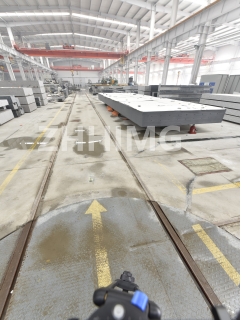Granite is known for its durability, hardness, and high resistance to abrasion, making it an excellent choice for optical waveguide positioning device products. In this article, we will explore the advantages of using granite components in these devices.
First and foremost, granite is an extremely hard and dense material that provides a stable platform for mounting and positioning optical waveguides. This is important because optical waveguides require precise alignment, and any slight movement or vibration can cause signal loss, distortion, or failure. The hardness of the granite provides a rigid and stable surface that ensures precise positioning and stability.
Secondly, granite is resistant to scratching and wear, which is crucial for optical waveguide products. Optical waveguides are typically fabricated from delicate materials, such as silica or polymer, and can be easily damaged by abrasion or scratching. However, the use of granite components in positioning devices helps to protect optical waveguides from external wear and tear, ensuring that they remain functional for longer periods.
Another advantage of granite components is that they are resistant to thermal expansion and contraction. This means that the optical waveguide positioning devices can maintain their accuracy even when subjected to extreme temperatures, which is important for products designed for use in harsh environments.
Furthermore, granite components are also resistant to corrosion, making them ideal for use in harsh environments where humidity and saltwater can damage other materials. This means that optical waveguide positioning devices made from granite will have a longer lifespan and require minimal maintenance over time.
Another benefit of using granite components in optical waveguide positioning devices is that they are relatively lightweight, making them easy to transport and install. This is especially important for portable positioning devices that need to be transported from one location to another.
Lastly, granite has a natural aesthetic appeal and is available in a variety of colors and patterns. This makes it an excellent choice for industries that require a high level of precision and aesthetically pleasing products, such as the aerospace, automotive, and medical industries.
In conclusion, the use of granite components in optical waveguide positioning devices provides many advantages, including stability, durability, thermal resistance, and corrosion resistance. Additionally, the lightweight nature of granite enables easy transportation and installation, while its natural beauty adds an aesthetic appeal to the product. All these benefits make granite a preferred choice for the manufacturing of optical waveguide positioning device products.
Post time: Nov-30-2023

